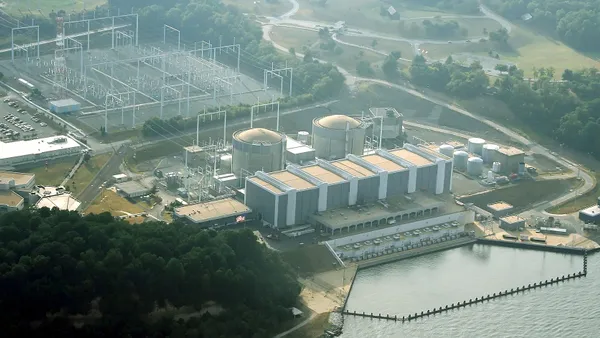Dive Brief:
- Arizona Public Service last week filed a 15-year Integrated Resource Plan that predicts a 60% growth in resource requirements and outlines a broad range of new resources to meet the need.
- While renewable energy and battery storage will both help, APS told the Arizona Corporation Commission that it will lean heavily on natural gas to meet growing demand. Gas-fired energy will grow from 26% of the utility's supply mix this year to 33% by 2032.
- In December, ACC Commissioner Andy Tobin criticized the utility's draft plan to increase natural gas generation, calling on the utility to develop "a more balanced and forward-looking perspective."
Dive Insight:
Population growth and a boost in economic activity are both expected to help drive APS demand significantly higher over the next decade and a half. The utility says it expects its resource requirement to reach 13,000 MW by 2032 — about 60% higher than this year.
To meet that target, the utility highlights plans for further investment in renewable energy and energy efficiency, but they don't constitute the brunt of its capacity additions. Its proposal calls for adding almost 5,400 MW of gas-fired resources, in addition to 3,300 MW of renewable energy.
According to the IRP, renewable energy will go from 12% in 2017 to 18% in 2032. Coal use will decline to 11%, and nuclear energy will drop to 17%. By 2032, gas will be generating a third of APS energy.
Tammy McLeod, APS vice president of resource management, said in a statement that the utility's mix is "increasingly cleaner, and we are adding more quick-starting power sources to integrate our growing solar energy resources and emerging technologies.”
The addition of more than 500 MW of battery storage will also help support growing intermittent renewables, and APS is looking to advanced inverters and other controllable resources to assist in managing peak demand.
APS will also continue to operate the Palo Verde Nuclear Generating Station, which it says generates almost 80% of the state's carbon-free energy. Overall, APS said half of its current energy mix is now carbon-free: 25% nuclear, 12% renewables and 13% efficiency. And the utility anticipates reducing carbon intensity by 23% and water intensity by 29% during the planning period.















